Did you know that botanically pumpkins are berries? To be precise, they are shell berries. Everything you need to know about the Hokkaido pumpkin can be found here.

The Hokkaido Pumpkin (Cucurbita maxima) is ideal for smaller households due to its handy size. In the following, we will show you how you can grow the squash yourself in your own garden and what you should bear in mind.
Contents
- Hokkaido pumpkin: appearance, properties and origin
- The most beautiful varieties
-
Plant Hokkaido Squash
- Prefer Hokkaido pumpkin
- Climbing aids for the Hokkaido pumpkin
- The right location
- Caring for the Hokkaido pumpkin
- Harvest Hokkaido Squash
- durability and storage
- Preparation and use of the Hokkaido pumpkin
Hokkaido pumpkin: appearance, properties and origin
The Hokkaido squash is also known as "chestnut" or "chestnut squash". These names are based on its nutty taste, reminiscent of chestnuts. The name "Hokkaido", on the other hand, comes from its origin in the Japanese North Island of the same name. in the 19th In the 19th century, Americans brought the ancestor of the plant known today to the island, where a more intense flavor was achieved through breeding. In Japan, however, the edible pumpkin is not known by the name we are familiar with, but as "Uchiki Kuri". In our latitudes, the pumpkin has only been found since the 1990s. Since our climate is very similar to that on the Japanese island of Hokkaido, the pumpkin plant thrives here as long as you pay attention to a few points.
The annual, climbing plant belongs to the pumpkin family (Cucurbitaceae) and produces fruits weighing 0.5 to 1.5 kg. It is a broad, round fruit, the skin of which is usually orange to light red in colour, but some varieties are also grey-green to blue. Inside there is a yellow to orange pulp as well as fibers and seeds.

Hokkaido pumpkins are characterized by a climbing growth, with the shoots often being a good 3 to 4 m long. Thus, an area of one and a half to 2 square meters should be planned for each plant. The foliage is dark green, almost round, large leaves that shield the sun. In this way, the evaporation of the essential water in the root area can be reduced. This is important because the root system is rather shallow.
Like all other pumpkins, the Hokkaido pumpkin is monoecious. Thus, a distinction is made between male and female flowers. Both are funnel-shaped and yellow, with the female variant already showing a thickened base. This later develops into fruit. Monoecious also means that the plants are strictly cross-pollinators and that insects are required for pollination. In order to attract as many of them as possible, the flowers are rich in nectar and pollen and are therefore bee-friendly. In our latitudes, they begin to bloom in early summer from June, depending on the sowing date.
The most beautiful varieties
While we mainly have the orange varieties, grey, green and blue Hokkaido varieties are also very popular in Japan. They are characterized by an extremely sweet taste. Here is a brief overview of the most popular Hokkaido pumpkin varieties:
- ‘amoro': Orange skin with light stripes; heart-shaped; thin-skinned and tender; high yields; little climbing and therefore well suited for tubs or raised beds; small fruits; very early ripening: harvest possible in summer.
- 'Blue Ballet': blue-green shell; lower yields, but aromatic, nutty taste; medium-sized fruits; precocious.
- ‘Blue Kuri': Thicker, bluish shell; high yields; varying in size; medium maturing.
- ‘Green Hokkaido': dark green shell; long shelf life; fine aroma; climbing medium-sized fruits; rather late maturing.
- ‘Red Kuri': orange peel; low location requirements; nutty taste; smaller fruits; rather medium-late ripening.
- ‘Solor‘: shell colored orange; long shelf life; nutty aroma; small fruits; precocious.
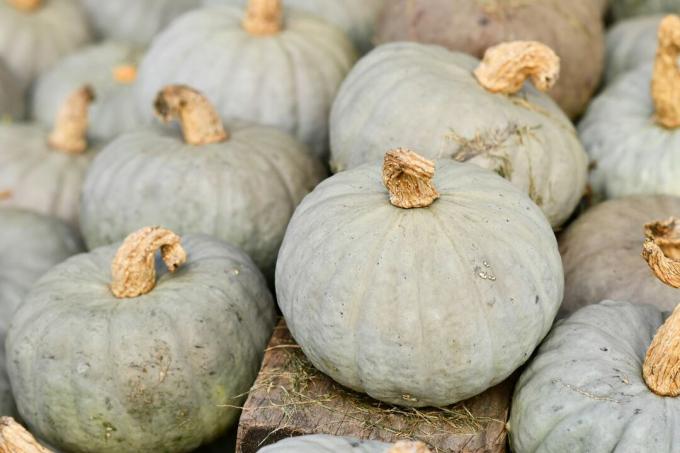
Plant Hokkaido Squash
Since pumpkins are generally very sensitive to frost, the Hokkaido pumpkin should only be planted out or sown outdoors after the ice saints in mid-May. Early-ripening varieties can be sown directly into the bed until the end of June.
Since Hokkaido pumpkins are heavy feeders, they should be planted in nutrient-rich soil. The best way to do this is to enrich the soil with compost or another nutrient-rich substrate before sowing. A climate-friendly variant like ours is recommended Plantura organic compost. This pre-fertilized, peat-free organic soil improves the soil quality and thus contributes to healthy root growth.

Organic compost 62.5 L
- Ideal for all ornamental and useful plants with a high nutrient requirement and for raised beds
- For improved soil quality & healthy root growth
- Peat-free & climate-friendly: CO2-reduced organic soil made in Germany
When sowing, the seeds of the Hokkaido pumpkin are placed in the soil with a row and plant spacing of about 1 m and a sowing depth of 2 to 3 cm. The flat side of the seed should be facing down. Then they are covered with substrate and lightly pressed on. The seed should be kept constantly moist until germination begins. It is best to use a watering can with a spray attachment or water mist from the garden hose to ensure that the substrate is not washed away.
Prefer Hokkaido pumpkin
Due to its sensitivity to frost, it makes sense to prefer Hokkaido plants, especially in cooler regions. Preparing the seedlings allows for an earlier harvest and also protects the small, delicate seedlings from snails. It is possible between the end of March and the beginning of May and should be done in individual plant pots with a diameter of around 9 to 10 cm. As with direct sowing, the seeds are planted 2 to 3 cm deep in the soil, covered with them and carefully watered. Then you should fix a foil with a rubber band on the potty and place it in a bright, warm place such as on the windowsill. The temperature should be 20 to 24 °C during germination, which lasts around 8 to 14 days. The pots must be aired daily to avoid mold growth or damping-off of the young seedlings. Then a temperature of 16 to 18 °C is ideal for further cultivation until planting out. In principle, it is possible to plant the pumpkin plants outdoors from 3 weeks after sowing, provided that no more frost is to be expected.

Climbing aids for the Hokkaido pumpkin
For Hokkaido varieties with small fruits, trellises can be a good choice to control fungal diseases, for example by better drying or to make less attack surface for pests such as voles or snails offer. A climbing aid is recommended for the balcony cultivation of the Hokkaido pumpkin, as this achieves space-saving growth in height instead of width.
If you have the opportunity to plant the autumn vegetables next to the garden fence, this is probably the easiest way to create a trellis. Otherwise, you can learn how to make one yourself in our separate article Support for pumpkins can build.
The right location
The Hokkaido pumpkin needs a sunny and rather sheltered location, robust varieties thrive without problems in a field. In addition, he has a high demand for space and he also places special demands on the soil. This should be rich in nutrients, profound, loose and humic and warm up early. In addition, it is important that water is kept well, but that no waterlogging occurs. Light to medium-heavy soils such as loamy sand or sandy loam are therefore best suited. On the other hand, if the soil is very sandy, it is important to add compost and high-quality garden soil. On the other hand, soil that tends to compact can be helped by creating a drainage layer of sand and compost to ensure permeability. Another way to ensure drainage is to plant the fall vegetables on a mound that has been made or an existing mound such as a compost heap. Planting near the compost is generally advisable due to the high nutrient requirement.
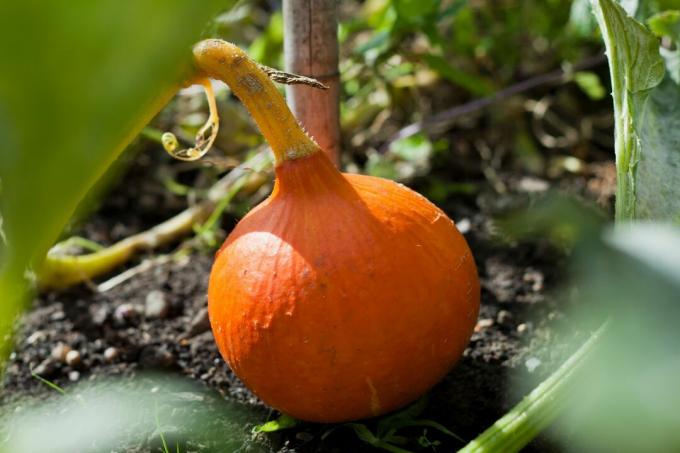
If you want to cultivate the Hokkaido pumpkin in a bucket, a large container with a diameter of at least 40 cm is required for each plant. Another thing to note here is that you always need two or more specimens, as fertilization requires male and female flowers from separate plants. To allow water to drain, there should be holes in the bottom of the vessel and a drainage layer should be laid, for example, from expanded clay.
Cultivation in a raised bed is basically possible. Here you should definitely plant the pumpkin plants on the edge. This way they will climb downwards instead of taking up too much valuable raised bed space.
It should also be noted that in the crop rotation no cucurbits are planted one after the other in the same location. This includes not only other pumpkins, but also Cucumber (Cucumis sativus), melon and zucchini (Cucurbita pepo subsp. pepo convar. giromontiina). A cultivation break of 3 to 4 years must be observed. In addition, no other cucurbits should be planted in the immediate vicinity if you want to obtain seeds for re-seeding. They could cross-pollinate and negatively impact the tastes of the next generation.
Other heavy feeders like potatoes (Solanum tuberosum) should not be close by. Good neighbors, on the other hand, are broccoli (Brassica oleracea var. italiana), Leek (Allium porrum), marigolds (Calendula officinalis), Corn (Zea mays) and climbing types of beans (Phaseolus vulgaris). This is a proven mixed culture Milpa bed the Maya. Here, corn, beans and squash are grown on the same area and benefit from each other.
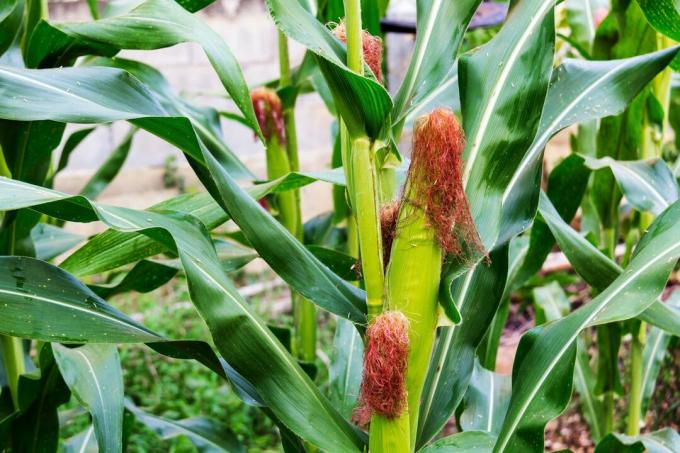
Caring for the Hokkaido pumpkin
A few things you do when caring for your Hokkaido pumpkins will pay off in the form of a great harvest later on. In order to create the best starting conditions, you should start regularly Weed weed and thus keep away any competition for nutrients, water and light. Later in the growth process, when the plant covers the ground broadly, this is no longer necessary. If temperatures drop below 10 °C after sowing or planting young plants, the culture should be covered with fleece. It is also important that the soil is always supplied with sufficient water. This should only dry on the surface. The plants should therefore be watered at least once a day when it is hot, and twice a day if necessary. When watering, the leaves must be kept as dry as possible, otherwise diseases such as downy mildew (downy mildew) are favored. If the root area is dry, however, the risk of powdery mildew increases (Erysiphaceae). A layer of mulch can help here. Also, in order to exclude the pumpkins from rotting during growth, it is worth straw, dry Grass clippings or, for example, a board under all fruits as soon as they start to grow to train.
If you want to harvest the largest possible fruit or make sure that the pumpkin fruit you have is good mature, it is advisable to pinch out excess shoots or the tip of the shoot in June and July to shorten. How to do this and a more detailed description of planting, care and harvesting can be found in our other articles on the subject pumpkin. Since most Hokkaido varieties are rather precocious, they usually ripen on their own. This means that no additional pruning before the fruit ripens is often necessary.

Since pumpkins are heavy feeders, fertilizing is recommended. Even before sowing or planting, the soil should be enriched with fertilizer, compost or stored manure. If you want to keep the fertilizer application to a minimum, you can use a slow-release fertilizer like ours Plantura organic tomato fertilizer To fall back on. This primarily organic fertilizer only needs to be applied twice during the growing season. But nettle manure is also good for covering the increased nutrient requirements of Hokkaido pumpkins. Ideally, this should be diluted 1:10 to 1:20 with rainwater and applied about once a week during the growing season.
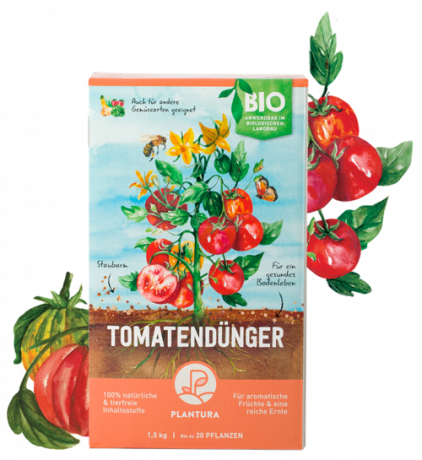
Organic tomato fertilizer 1.5 kg
- Ideal for tomatoes, chili, zucchini, cucumber & Co.
- For stronger plants & an aromatic, rich harvest
- Animal-free organic slow-release fertilizer - safe for pets and garden animals
Harvest Hokkaido Squash
When the days are getting noticeably shorter and you are looking forward to the first pumpkin soup of the season, the pumpkins are ripening. Hokkaido pumpkins can be harvested about 95 to 120 days after sowing. To make sure the autumn vegetables are ripe, you can tap the fruiting body lightly. If you then hear a hollow noise, this is a good sign. In addition, with orange-red varieties, no green spots should be visible and the stem should be woody and dry.
When the pumpkins are ripe, they can be harvested. To do this, carefully cut them off together with the base of the stem. It is imperative that all pumpkins are harvested before the onset of the first frost. Thus, the harvest time for Hokkaido pumpkins is usually between September and November.
Tip: Never consume bitter gourds! The contained cucurbitacin is poisonous. In particular, pumpkins from self-seeds can contain toxins due to crossbreeding. Therefore, the pumpkin fruits should be tasted carefully and should not be eaten if they are bitter.
durability and storage
If stored properly, you can still enjoy the pumpkins 3 to 4 months after harvest. The following must be observed:
- Leave the stalk on the pumpkin
- Store dry and protected from cold
- Temperatures between 12 and 15 °C are ideal
- Below 10 °C there is an increased risk of storage rot
- Store only in mold-free places
- Don't stack the pumpkins and turn them occasionally
- A pad of newspaper or cardboard to reduce pressure points
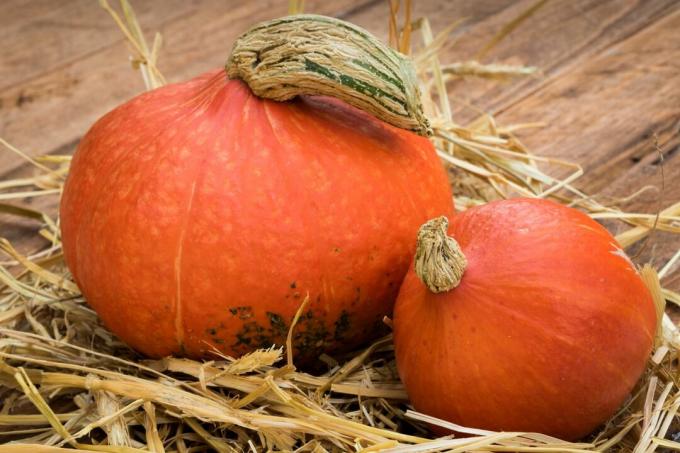
You can freeze Hokkaido squash to keep autumn vegetables for up to a year. To do this, you should remove the seeds and the stem and cut it into the shape you want later. It is also possible to freeze the pumpkin in the form of a mousse. Boiling, pickling in vinegar or processing into a tasty jam is also possible.
Preparation and use of the Hokkaido pumpkin
The Hokkaido pumpkin variety is considered to be particularly healthy because it contains a large number of vitamins and minerals. These include vitamins from groups B, C and E as well as the orange-red pigment beta-carotene, which is converted into vitamin A in the body. This has a positive effect on hair, skin and eyesight. As the color of the orange-red varieties suggests, there is a lot of beta-carotene in it. Luckily, the skin of the Hokkaido squash is edible when cooked, as it becomes tender along with the flesh. It also contains folic acid, potassium, magnesium, iron and phosphorus. The pumpkin is also said to have a draining effect. It is said to increase bladder and kidney activity when consumed. In addition, the pumpkin variety convinces with a low-fiber and firm pulp and a nutty taste.
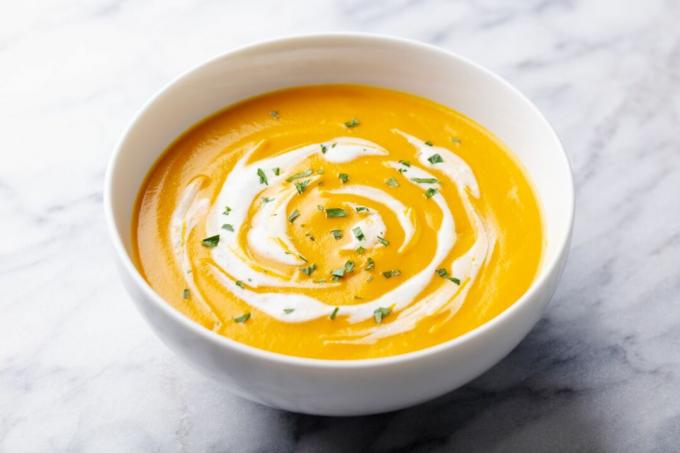
The pulp can be used to prepare a wide variety of dishes - such as pumpkin soup, stuffed Hokkaido pumpkin, casserole, oven-roasted vegetables, pumpkin gnocchi or baby porridge. However, other parts of the plant can also be consumed. For example, the pumpkin leaves are edible as leafy vegetables, provided the fibers are removed from them, and the seeds can be eaten roasted.
Another popular squash is the butternut squash. In our separate article you will find all the important information you need to Grow your own butternut squash.
Secure a 10% welcome discount for our online shop and receive great tips, seasonal trends and inspiration from our garden experts every week.


